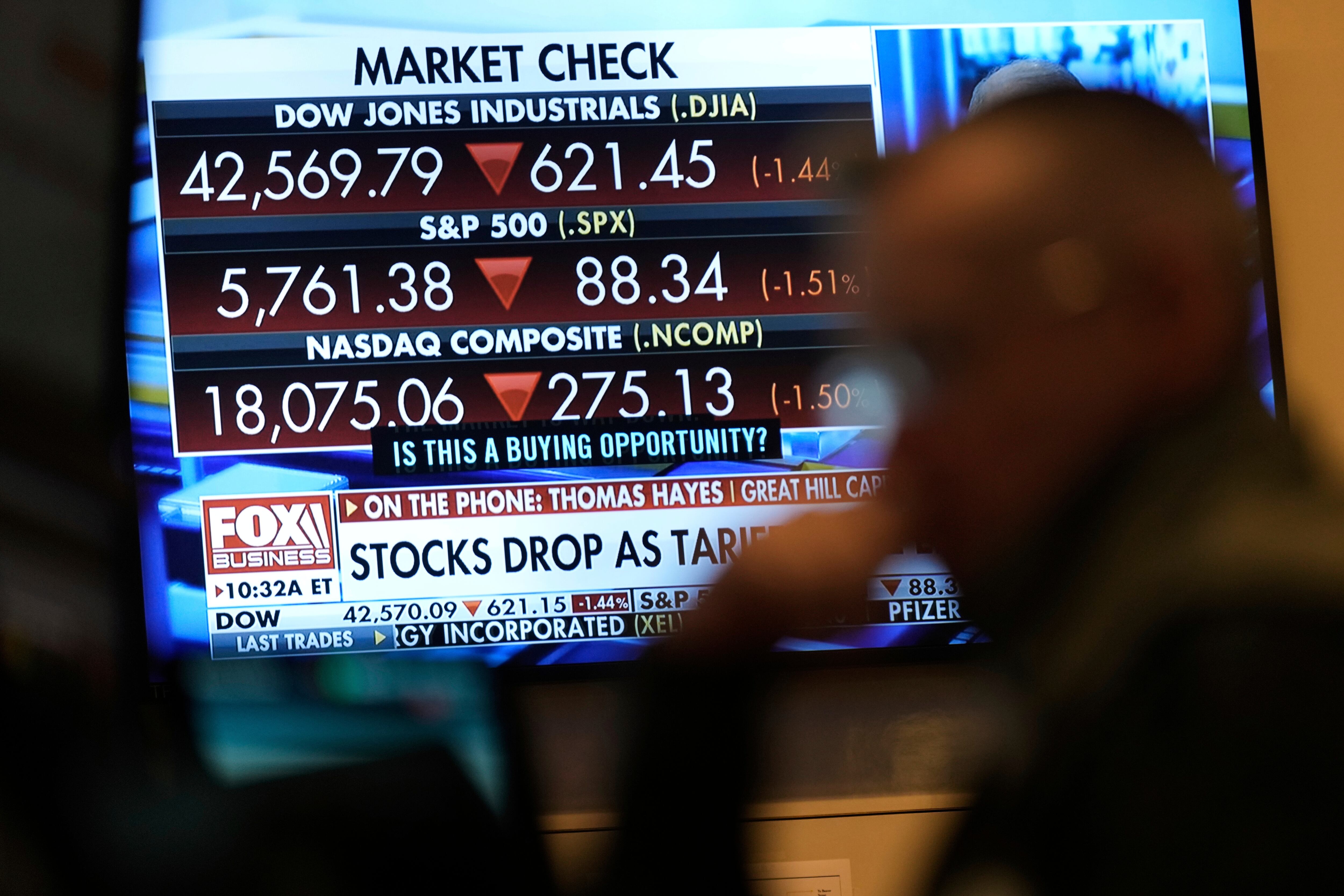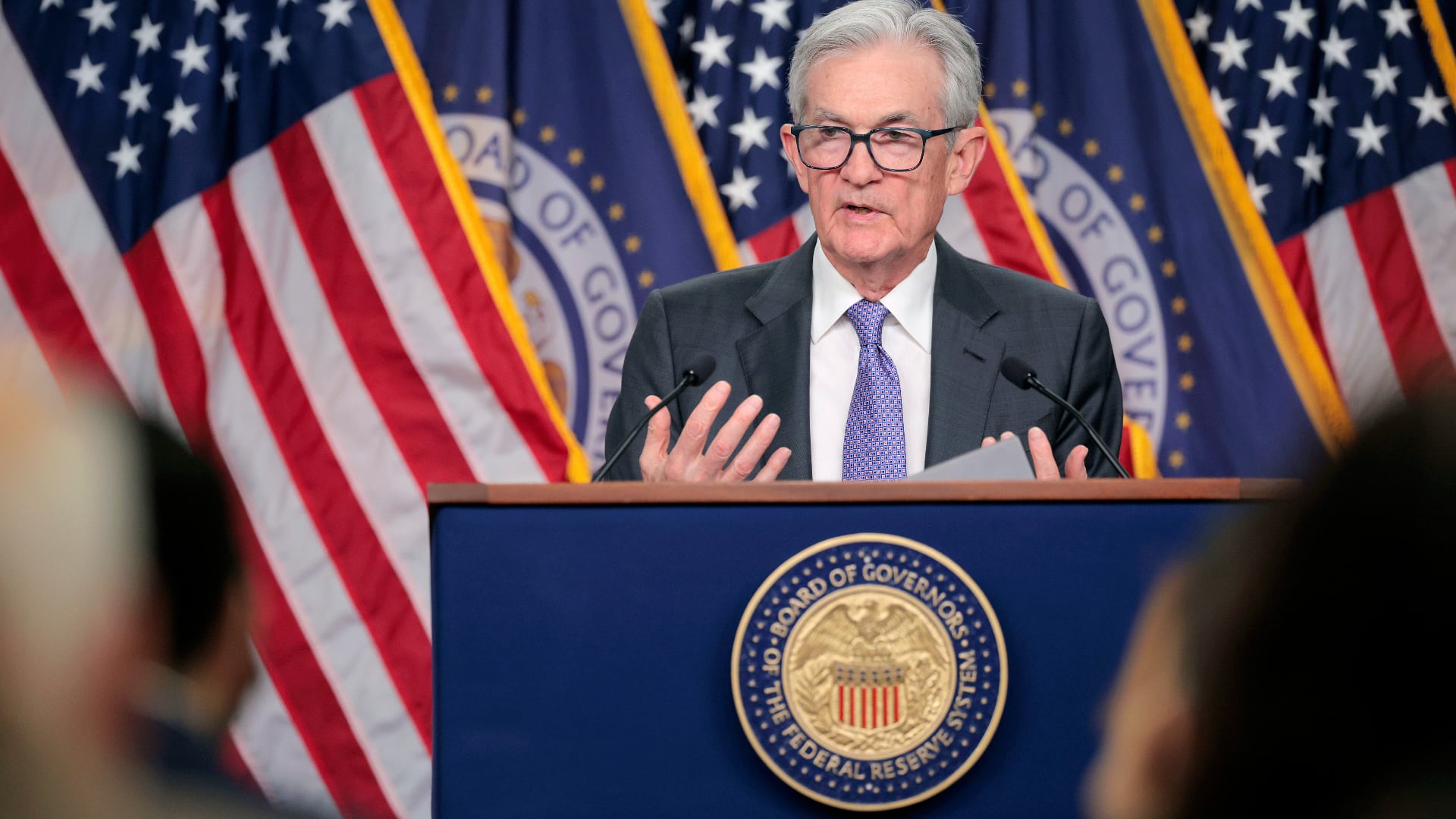NEW YORK (AP) — Much like all the upheaval shaking the world, the huge swings rocking Wall Street may feel far from normal. But, for investing at least, all this is typical.
Sharp moves for the U.S. stock market, like its recent 6% drop in just a couple of weeks, happen regularly. Stomaching them is the price investors have to pay for the bigger returns that stocks can offer over other investments in the long term.
This time doesn't look much different, experts say. Here's a glimpse at what's behind the market's wild moves and what experts are advising investors young and old to consider:
THE MARKET IS BAD, RIGHT?
It has certainly struggled. The stock market's main benchmark, the S&P 500, has been dropping since setting an all-time high last month, largely because of worries about President Donald Trump's tariffs and signals that the U.S. economy is running less powerfully than economists expected.
Any kind of uncertainty around the economy will give Wall Street pause. These tariffs have had a particularly jostling effect because no one knows how long Trump will go through with them. When worries are high, stocks sink sharply. When Wall Street goes back to thinking Trump is using tariffs as just a negotiating tactic, stocks have bounced back, such as on Wednesday.
STOCKS DO THIS OFTEN?
Yes. The S&P 500 has regularly seen declines bigger than this recent one, of 10% or more, every year or so. Often, experts view them as a culling of optimism that can otherwise run overboard, driving stock prices too high.
Before this recent stumble, many critics were already saying the U.S. stock market was too expensive after prices rose faster than corporate profits. They also pointed to how only a handful of companies was driving so much of the market's returns. A group of just seven Big Tech companies accounted for more than half of the S&P 500's total return last year, according to S&P Dow Jones Indices.
SHOULD I SELL AND GET OUT?
Anytime an investor sees they’re losing money, it feels bad. This recent run feels particularly unnerving because of how incredibly calm the market had previously been. The S&P 500 is coming off a second straight year where it shot up by more than 20%, the first time that's happened since baggy pants were last in style before the millennium.
Selling may offer some feeling of relief. But it also locks in losses and prevents the chance of making the money back over time. Historically, the S&P 500 has come back from every one of its downturns to eventually make investors whole again. That includes after the Great Depression, the dot-com bust and the 2020 COVID crash.
Some recoveries take longer than others, but experts often recommend not putting money into stocks that you can't afford to lose for several years, up to 10.
“Data has shown, historically, that no one can time the market,” said Odysseas Papadimitriou, CEO of WalletHub. “No one can consistently figure out the best time to buy and sell.”
Put another way: “Keep on keeping on,” suggests Chris Fasciano, vice president, investment management and research, and chief market strategist at Commonwealth Financial Network.
SHOULD I CHANGE ANYTHING WITH MY INVESTMENTS?
Even as the overall U.S. stock market has dropped, some corners outside the Magnificent Seven have done much better, Fasciano said. So have stocks outside the United States.
It could all be a reminder that investors often do best when they have a mixed set of investments rather than going all-in on just a few. And investors may no longer be as diversified as they thought after years of sheer dominance by the Magnificent Seven over the U.S. stock market and by Wall Street over global markets.
“Now’s the time to revisit some of the old tried-and-true of portfolio construction, like diversification,” Fasciano said.
I JUST STARTED INVESTING IN STOCKS. WHAT SHOULD I DO?
The proliferation of online trading platforms and the ease of smartphones has helped create a new generation of investors who may not be used to such volatility.
But the good news is younger investors often have the gift of time. With decades to go until retirement, they can afford to ride the waves and let their stock portfolios hopefully recover before compounding and eventually growing even bigger.
“We would advise younger investors to not worry about this at all,” said Phil Battin, CEO of Ambassador Wealth Management. "It’s just background noise. If you have 30 to 50 years until you need the money, the economy has survived world wars, oil embargoes, presidential assassinations, Y2K, and a global pandemic. It will survive the Trump tariffs as well.”
WHAT ABOUT CRYPTO?
This is a little trickier. “In theory, part of the appeal of crypto is that it’s supposed to be a hedge investment that isn’t correlated with the stock market or the fiat-currency economy,” said Sam Taube, who advises investors for NerdWallet.
But in reality, at least recently, crypto has often gone down in price when stocks have gone down, instead of offering that hoped-for protection during Wall Street's sell-offs. "So, young investors may need to rethink the idea that crypto’s value is completely independent of the stock market and broader economy,” Taube said.
WHAT IF I'M NEAR RETIREMENT?
Older investors have less time than younger ones to allow their investments to bounce back. But even in retirement, some people will need their investments to last 30 years or more, said Niladri “Neel” Mukherjee, chief investment officer of TIAA Wealth Management.
People who have already retired may want to cut back on spending and withdrawals after sharp market downturns, because bigger withdrawals will remove more potential compounding ability in the future. But even retirees, at least in the early part of retirement, should still be invested in stocks to prepare for the possibility of decades of spending ahead.
“You may want to slow that down and pick that back up once the market recovers,” Mukherjee said, “but it all comes down to having that conversation with your adviser and your portfolio manager.”
HOW LONG WILL THIS LAST?
No one knows, and don’t let anyone tell you otherwise.













